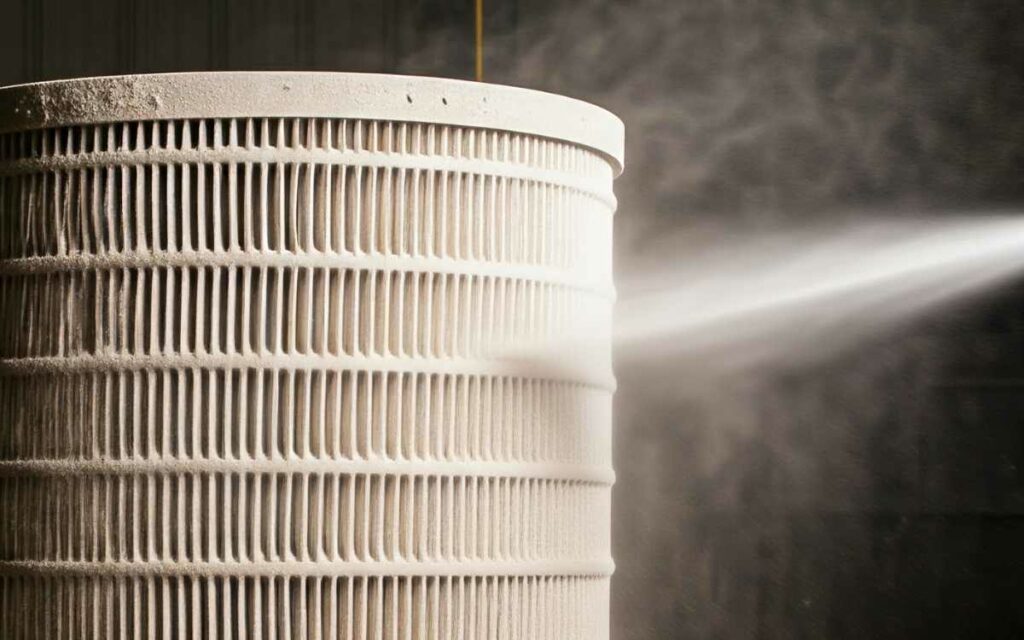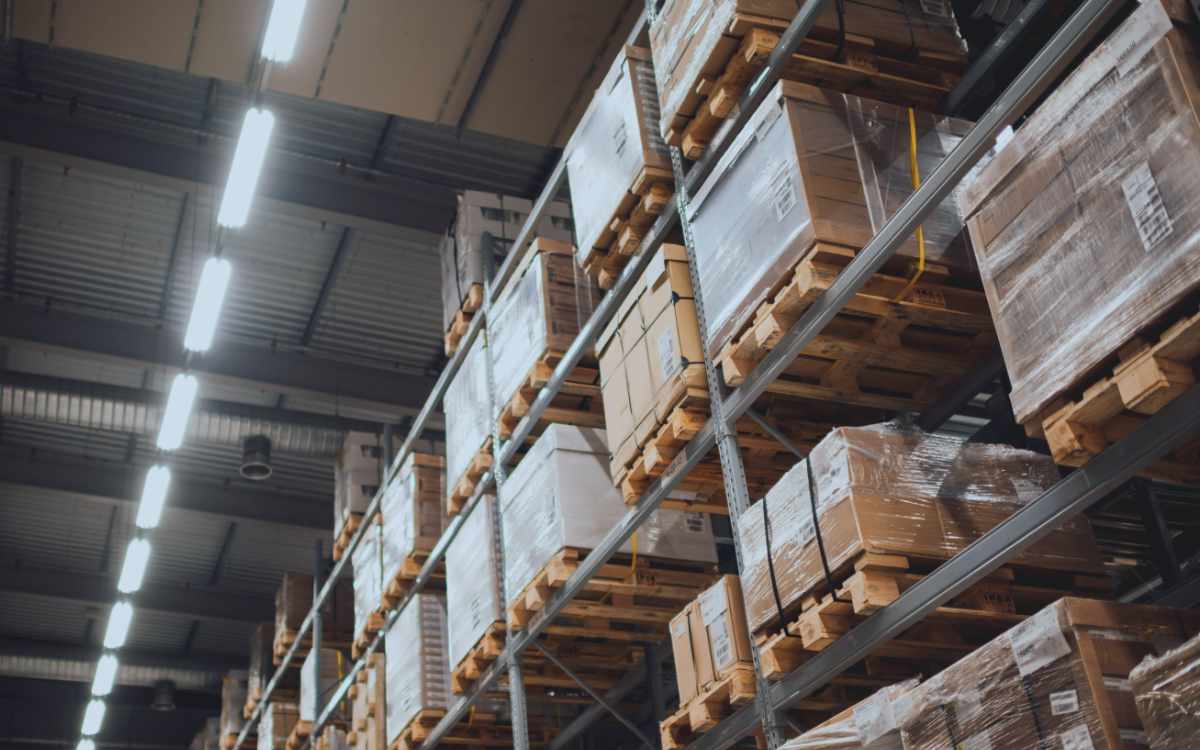When it comes to maintaining a dust collection system, one of the most important tasks is keeping the filters clean. Over time, filters become clogged with dust, which can reduce the system’s efficiency and impact air quality. A common question many people ask is whether it’s okay to take filters out of the dust collector and manually clean filters using compressed air. While this method might seem like a quick fix, we do not recommend it for several important reasons.
The Risks of Cleaning Filters with Compressed Air
Using compressed air nozzles to clean your dust collector filters may seem like a convenient option. However, it poses several risks that could ultimately damage your filters and compromise system performance.
1. Risk of Physical Damage
When loading up filters with dust and debris, they can become quite heavy and awkward to handle. If you remove the filter from your dust collector to clean it with compressed air nozzle, you run the risk of inadvertently dropping or mishandling the filter. This can lead to physical damage such as tears or dents in the filter media. A compromised filter may no longer function effectively. This leads to dust leakage that can affect the clean air side of your system.
2. Creating Tiny Holes in the Media
One of the most significant dangers of using compressed air nozzles is the potential to create tiny holes or punctures in the filter material. Even a small hole in the filter, easily missed by the naked eye, can allow dust to bypass the filtration process. This defeats the purpose of having the dust collector in the first place. As dust particles slip through, they will be released into the air, potentially causing air quality issues and health hazards. Over time, this can also put additional strain on your dust collection system. As a result, it will work harder and use more energy.
3. Compromising Filter Efficiency
Most dust collector filters are designed to trap particles of specific sizes. Directing compressed air at the filter can forcefully dislodge particles. However, this action can also disrupt the structure of the filter material. By doing so, you may alter the filter’s ability to capture smaller dust particles. Once the structure is compromised, the filter’s effectiveness diminishes, which can result in less efficient dust collection.
What You Should Do Instead of Cleaning Filters with Compressed Air
Rather than relying on compressed air nozzles for cleaning, it’s important to recognize that even well-maintained filters will eventually need replacement. Over time, dust particles accumulate and begin to clog the filter, reducing its ability to function properly. Here’s how you can determine when it’s time to replace your filters:
1. Monitor Differential Pressure
One of the best ways to know when your filters need replacing is by monitoring the differential pressure across the filter. Differential pressure is the difference in air pressure on the dirty side and clean side of the filter. As the filter becomes clogged, this pressure difference will increase. If the differential pressure reading rises above 5, it’s a sign. This means that the filter is no longer performing effectively and needs replacement.
2. Signs of Physical Damage
Even if the filter’s pressure readings are normal, it’s important to check the filter for physical signs of wear and tear. If you notice any tears, holes, or obvious damage, it’s time to replace the filter. Small imperfections in the filter material can lead to air quality issues by allowing dust to bypass the filtration system.
3. Reduced Airflow
Another indicator that your filters may need replacement is reduced airflow in your dust collection system. If the system isn’t pulling air as efficiently as it used to, the filters may be too clogged or damaged to function properly.
While using compressed air nozzles to clean dust collector filters might seem like an efficient solution, it’s not worth the potential risks. The damage that can occur from mishandling or creating holes in the filter media far outweighs the temporary benefit of a cleaner filter. Instead, allow your dust collector to handle the cleaning. Regularly monitor your system’s performance, keep an eye on differential pressure, and replace filters when necessary. Keeping your dust collector filters in good condition will help ensure the long-term efficiency and safety of your system.



